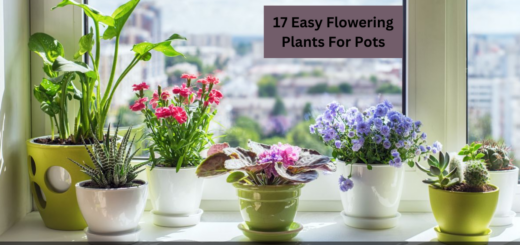Spanish Bayonet Yucca ‘Yucca Aloifolia’ – How to grow & care for Yucca Bayonet?
Do you also admire the beauty of the Spanish Bayonet Yucca, or is it just me enjoying it? Are you already growing them, or are you wondering whether to try or not? If you haven’t tried yet, then you’ve come to the perfect page.
I have grown Spanish Bayonet Yucca in my garden, and trust me, you will not regret growing them. Why not give it a try?
In this informative guide, I’ve shared all the important steps required for growing Spanish Bayonet Yucca, which will result in the best blooming. Furthermore, if you encounter any issues, feel free to ask me in the comment section below.
Spanish Bayonet Yucca:
The Spanish bayonet plants are resistant to many pests and diseases. Flowers of yucca are also used for culinary purposes or taken raw. The plants are hardy and grow in USDA zones 8-12. The leaves are super pointy and have sharp edges. The leaves are quite large and wide with ponty surfaces that can easily cut down the skin.
Yucca aloifolia commonly known as Spanish bayonet is native to Mexico, and southern and central parts of the USA. The other names of the Spanish Bayonet are aloe yucca and dagger plant.
The family of Spanish bayonets is Asparagaceae. Belonging to the family Asparagaceae, they look a lot like asparagus. This article will discuss the growth & care tips for Spanish Bayonet Yucca.
Features of Spanish Bayonet Yucca
| a. Leaves: dark green, tough, tips have sharp needles. |
| b. Stem: thick and wide. |
| c. Flowers: bell-shaped, white-colored |
| d.They are perennial, cactus-like plants. They grow slowly. |
| e. They can grow in any pH of soil type unless it’s well-drained and sandy. |
How to grow Spanish Bayonet Yucca plants?
The seeds can be easily collected by simply drying the capsule and squeezing out the seeds. The seeds can be planted and germinate in winter. The temperature should be 60-70 degrees Fahrenheit. The soil should be moist and well-drained.
1. Light
Yucca dagger plants need a lot of sunlight just like many succulents. The temperature they like is 50 to 60 degrees Fahrenheit in the cold season while the high temperature is above 70 degrees Fahrenheit in summer.
2. Water, humidity
Let’s keep it easy if the heat is too much, the sunlight is strong, and water is flowing frequently. In the opposite case, lessen watering. The same goes with humid conditions, low watering should be done.
3. Soil
The soil should be moist and have a potting mix of peat with sand.
4. Watering
Overwatering of plants just like Jade plants will also lead to root rot and affect the stem. Watering should be done regularly in the summer season as well as in spring.
The watering should be decreased in winter. Look at the soil if it feels dry then sprinkle the water, don’t do overhead watering.
5. Fertilizer
Not much fertilizer! is what they scream. The yucca plants don’t like much nitrogen in the fertilizer. Mineral fertilizers having a good supply of calcium, iron, magnesium, and sulfur are important.
6. Transplant
Take out the root ball with the help of garden purpose forks. Gently take out the play by pulling it slightly from the ground.
The dust and mud need to be removed by brushing with fingers or a brush. As the roots appear, place them in a box and then transplant them to a new suitable spot.
7. Propagation
- Yucca plants can be propagated by stem cutting.
- The seeds can be easily collected by simply drying the capsule and squeezing out the seeds. The seeds can be planted and germinate in winter. The temperature should be 60-70 degrees Fahrenheit. The soil should be moist and well-drained.
- Propagation can be done with the suckers or offshoots that are formed at the bottom of the plant by simply cutting them and placing them in moist soil with a potting mix.
8. Pruning
Pruning is not that essential but you can cut the flowers if there are too many or after blossom. The height of the Spanish bayonet is about 15 feet.
Numerous offshoots give rise to the clumping habit of these plants. This clumping habit helps them to support the mature stem.
9. Toxicity
The white flowers of yucca plants can be eaten whether raw or cooked. On the other hand, the sharp edgy pointed leaves are dangerous to be touched by children, and pets as they can easily pierce the skin.
10. Fruits
Fruits are unusually seen baked in the oven by many Indians residing in North America. The fruits are palatable and sweet. They are about 6.6 inches long and 2.7 inches in width.
11. Pests and diseases
- Pests are aphids.
- Leaf spot disease is usually seen in Yucca aloifolia.
- The leaves often lose color and turn yellow, indicating that sunlight is burning the plants.
- You need to move the plant to a shady area facing south.
- Move the plant inside when it’s too cold or the temperature drops.
Uses of Yucca aloifolia
- These plants are well known to be used for making baskets, some clothes, and also footwear.
- They can be used for defensive purposes and can be used on the sides of fences.
- These plants can form a great landscape with a desert theme and a bit of drama.
- They are perfect for placing indoors as well in the blank spots, in the rockeries. They are perfect for creating dramatic borders on the terrace or porch.
- The coastal garden looks great when Yucca aloifolia is there.
Final thoughts on the context
The Spanish Bayonet Yucca-Yucca aloifolia plants are known by many common names. Spanish Bayonet Yucca are true lovers of sunlight. Depending upon the type of plant, they reach a height of 10-15 inches and need well-drained moist soil but don’t stay soggy for too long. All the information regarding growing and caring for the yucca plants is written above just like Calathea Beauty Star Plant. We hope you like our effort to reach you with some help.
FAQs
1. How do you maintain the yucca plant?
Yucca plants should be planted in spots with good sunlight and drained soil. The sunlight should be indirect. In summer, water frequently while in winter wait for the soil to dry out.
2. Is Yucca aloifolia a tree?
Yucca aloifolia has a soft stem that is trunk-like. They look a lot like an evergreen tree that reaches a height of 6-12 feet and has stalked leaves with no branches, having spikes at the end.
3. Can yucca be grown in pots?
Yucca plants are easy to grow even in pots. They bring drama to the spots they are in. It is great to plant in a pot as you can move the container anywhere you want in-house. You might need a big pit as they also thrive well in a pot and are tall like on the ground.
4. What happens if you cut the top off a Yucca?
The top of the yucca plant has many dividing cells that further elongate after maturing and add to the length of the plant. After you cut off the top of the yucca plant, you witness the stunted growth of the yucca plant. The new leaf buds will not form and the remaining leaves will later drop off.


